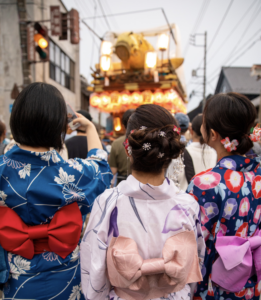The centuries-old tradition of the Hadaka Matsuri, or Naked Festival, at Japan’s Konomiya Shrine took a historic turn this year as women participated alongside men for the first time in 1,250 years. This marked a significant shift in a festival that has seen little change throughout its long history.
The addition of women to the festival was a groundbreaking moment, especially in a country like Japan, where gender equality has been a persistent issue. Japan ranked 125 out of 146 countries on the World Economic Forum’s gender gap report, reflecting the challenges women face in male-dominated spaces.
Despite the traditional roles assigned to women in supporting the festival behind the scenes, the decision to include them in the public celebration was met with mixed reactions from the community. While some viewed it as a positive change that could bring joy and blessings to all participants, others questioned the presence of women in a traditionally male-centered event.
For Atsuko Tamakoshi, whose family has been involved in the festival for generations, the inclusion of women was a meaningful step towards progress. She emphasized the importance of everyone, regardless of gender, having a chance to participate and have fun during the festival, as it would ultimately please the gods.
The women who participated in the festival did so with a sense of pride and responsibility. Unlike the nearly-naked men who stormed the shrine, the women wore long purple robes and white shorts, carrying bamboo offerings as they made their way to the sacred space. While they did not engage in the same rituals as the men, they brought a sense of grace and reverence to the proceedings.
As the women stood in two parallel lines, holding bamboo sticks with red and white ribbons, they prepared themselves for the chants and rituals that would follow. With the support of the crowd cheering them on, they braved the cold water dousing and completed their contribution to the festival with a sense of accomplishment.
After bowing and clapping in gratitude at the shrine’s exit, the women were met with applause and praise from onlookers and media outlets. They shared their feelings of joy and fulfillment at being part of such a historic moment, breaking gender boundaries and continuing a cherished tradition.
Reflecting on the day’s events, Atsuko Tamakoshi expressed her gratitude and happiness at having been able to participate in the festival alongside her husband, who had always been involved in the celebrations. She emphasized the importance of inclusivity and unity, regardless of gender, in coming together to pray and celebrate.
The first Hadaka Matsuri with women was a momentous occasion that highlighted the evolving traditions and values of Japan’s cultural heritage. It was a reminder of the power of inclusion and diversity in shaping meaningful and enduring rituals that bring people together in celebration and fellowship.






